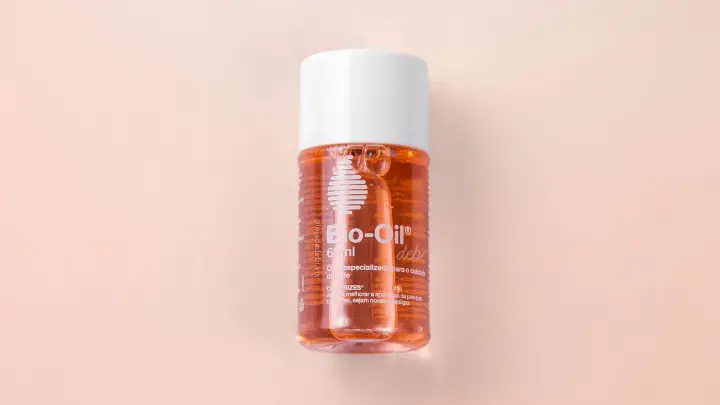Toner is an effective skincare product that should be in any skincare routine for oily skin. It is important to know how to use toner on oily skin as this will help to maximize the effect of the product on your skin.
Oily skin is one with a shiny appearance and enlarged pores which usually happens as a result of excess production of sebum in the skin. When the sebaceous secretes oil into the pores and it mixes with dead skin cells, the pores become clogged.
This results in the formation of blackheads, pimples, and so on on the surface of the skin. Using one that works well for treating oily skin will help to minimize the size of your pores and control sebum (oil) production in your sebaceous gland.
A good multitasking toner should be able to exfoliate as well as calm inflammation on your skin. It also shouldn’t contain oil-based ingredients. Read ahead to find out more information to guide the usage of toner for your oily skin.
How to Choose Toner for Oily Skin
If you find it difficult to use control breakouts on your oily skin, you have to incorporate the use of toner in your routine. When purchasing a toner, look for one that is specially formulated with ingredients that will help to reduce oil production in the skin.
Toners contain a wide range of active ingredients such as tea tree oil, aloe vera, BHAs, and AHAs. These ingredients target and remove excess oil in the skin.
For example, alpha-hydroxy acids(AHAs), can penetrate easily into the pores to exfoliate the skin. This exfoliation helps to clear out dirt, oil, and dead skin cells that are clogging your pores.
AHAs are a group of acids that you may find inside toners—to exfoliate the pores and skin. Glycolic, citric, and lactic acid are all AHAs and they have powerful effects in treating dull, oily, and aging skin.
Glycolic acid exfoliates the skin to get rid of dead skin cells and extra oil—to reveal a brighter, smoother, or even complexion.
Salicylic acid is another acid you can use to gain similar effects. Some toners additionally comprise clay, a herbal factor recognized for its oil-soaking abilities and skin purifying benefits. When utilized in toners, it leaves the pores and skin feeling easy and refreshed.
If you’ve got oily, yet sensitive skin, search for a toner that contains ingredients that will not irritate your sensitive skin. Do a patch test before you begin to use the product on your skin. Once you have confirmed that it is safe and won’t irritate your skin, you can begin to use it.
Use a toner that contains a mixture of exfoliating and nourishing ingredients like glycolic acid and aloe vera. Glycolic acid will help to exfoliate your skin while aloe vera will help to hydrate and soothe your skin.
Save your skin by starting with a toner that contains a high concentration of moisturizer and less of the exfoliating ingredient.
What Toner Should You Avoid Using on Oily Skin?
Avoid the usage of toners containing components including coconut and mineral oil, as those are used to deal with dry pores and skin; the usage of those toners will only worsen oily pores and skin.
Astringents are better components that can help to tighten pores and dry the pores and skin. Astringent toners are formulated to mainly deal with oily and acne-prone skin types.
However, they contain an excessive percentage of alcohol and may be harsh and strip away an excessive amount of oil, inflicting inflammation and dry patches—even for people with oily pores and skin.
What Does Toner Do for Oily Skin?
Toners are effective products that you can incorporate into your daily skincare routine if you have oily skin. The products are formulated with a variety of ingredients that are effective in reducing oil production in the skin.
These ingredients include glycolic acid, tea tree oil, witch hazel, and many more. Using toner for oily skin also helps to shrink pores and control sebum secretion. An effective toner should simultaneously exfoliate, soothe the skin, and be free from oily ingredients.
The product also helps to remove the remaining oil and impurities left behind by the cleanser. Additionally, it helps to reduce the enlarged pores caused by excessive oil secretion by the sebaceous glands.
If you have oily skin, you most likely have enlarged pores that give access to secreted oil and dirt. The larger the pores, the more dirt, and oil enters the skin. Using a toner will help to tighten the pores of your skin. These impurities make the skin more susceptible to acne and infections.
Regular use of toner will reduce pores and reduce their overall size. As a result, less oil and toxins accumulate in the skin, leaving the skin fresher and cleaner. Thanks to toning, the skin will become noticeably smoother and impermeable to impurities.
Sweat, oil, and dirt can clog your pores and cause acne. By removing sebum build-up, debris, and dead skin cells, facial toners control acne and other skin rashes.
Since toning is done immediately after cleansing, right before moisturizing, it makes the skin absorb the moisturizer faster.
The skin usually hardens and dries out immediately after washing. Wet skin absorbs topical products better than dry skin. This way, your favorite moisturizer can nourish your skin.
Even after washing, some impurities may remain on the skin. It could be part of the makeup residue or oil leftover from the cleanser. The important purpose of a toner is to remove dirt and any other leftover residues in the pores.
Toners also remove environmental toxins and chemical residues from the skin, resulting in brighter, healthier skin.
How Often Should You Use Toner for Oily Skin?
You can use a toner in the morning and evening. However, it is important to start slowly by using it every two days before working up to using it every day. This is a recommendation especially if you have sensitive oily skin.
Once your skin can take more frequent use of the toner, you can use it twice a day to remove sebum, makeup residue, and even sunscreen from your skin.
The best and most effective way to go about it is by using the toner after cleansing the face in the morning and evening. Do this before applying a pre-bed essence or cream, depending on the skin’s tolerance to frequent cleansing with strong toner.
When Should You Use Toner on Oily Skin?
Since toners help to remove leftover dirt and makeup residue from the skin, it is only right to use one immediately after cleansing. This will help to unclog your pores and allow your moisturizer and other skincare products to penetrate deep into the skin.
Therefore, use your toner right after cleaning before applying other skincare products—to improve their effectiveness.
How to Make Toners for Oily Skin at Home
If you prefer to make your DIY toner at home to minimize cost or for whatever reason, here are different DIY toner recipes you can try.
DIY green tea toner
Green tea is a powerful ingredient that offers many skin benefits. Green tea has been shown to reduce inflammation and not only have antibacterial effects but also reduce sebum production.
What you need:
- 2 green tea bags
- A cup of water
- An airtight container
How to do it:
- Drop the 2 green tea bags in 1 cup of water.
- Let it soak in it for about 5 minutes.
- Discard the bags and pour the liquid into the container.
DIY tea tree toner
Tea tree is a natural ingredient that is beneficial for oily skin. It helps to reduce excess oil and has anti-inflammatory properties that help to soothe inflammation on the skin. It is especially effective when the rash is caused by oily skin.
What you need:
- 3 drops of tea tree oil
- ¼ cup of water
- An airtight container
How to do it:
- Add three drops of tea tree oil to ¼ cup of water.
- Shake well till it’s well blended
- Transfer the liquid to the container.
DIY witch hazel toner
Witch hazel is an ingredient that is commonly used in astringents and toners for oily and acne-prone skin. It contains a high percentage of tannins—which is a natural astringent that helps to shrink pores and reduce excess oil from the skin.
What you need:
- A cup of water
- ½ cup of witch hazel
- A few drops of aloe vera (optional)
How to do it:
- Pour the witch hazel into the container
- Add a cup of water to it
- Shake well till it’s mixed
- Add aloe vera for moisturizing benefits.
Frequently Asked Questions
Does toner reduce oil for oily skin?
Yes, it does. Using a toner on your oily skin will help to dry up oil and also regulate the production of sebum in your sebaceous gland.
Should you use a toner first before moisturizer?
Yes, you should. Use your toner first before moisturizing to ensure that your skin is properly clean.
Toning your skin will also help to unclog your pores to allow your moisturizer to work efficiently on your skin.
Should you use toner for oily skin?
Yes, you should. Of all skin types, oily skin needs toner the most.
This is because oily skin is often acne-prone. Since toners can help to unclog pores and rid the skin of dirt and makeup residues, there will be a reduction in acne breakouts.
Conclusion
If you have oily skin, you need to incorporate the use of toner in your skincare routine. Toners help in the reduction of sebum production in the skin, as well as the removal of excess oil from the pores.
While looking to do this, you have to pick the right toner to use in your skincare routine. This is what determines the result you get from using the product. Make sure to look for ingredients that work best for your skin and skin concerns.
Toners that contain AHAs and ingredients like tea tree oil and witch hazel are your best bet. Try to avoid alcohol-based toners as they often dry out and irritate the skin.
Thanks for reading.
Visit Serum101 for more information on how to use your skincare products effectively on your skin.






